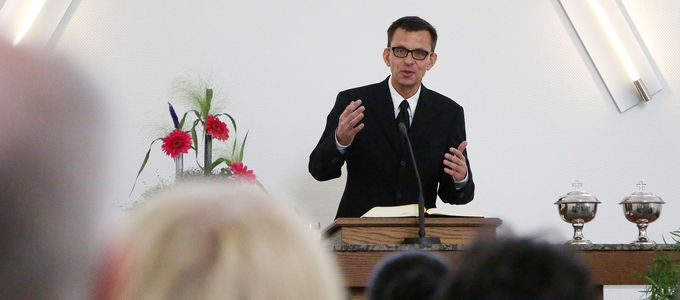
Photography in divine service. It not only raises questions, but sometimes also eyebrows. But the series shows that there are good answers and ways of doing things. As the final article in this series, here are a few dos and don’ts to make photography a memorable experience for all involved.
Talk first, then take photos. Consultation ahead of time with editors, ushers, those involved in the act, camera personnel, and possibly the officiant, are necessary to ensure the work goes smoothly and without any trouble.
One photographer will suffice. In large halls, a second photographer can be deployed as a backup—or in addition—to the main photographer. He will then be assigned a firmly agreed upon area.
Be in control. Attire is appropriate to the occasion. The photographer is quiet and unobtrusive. Walking routes and seating are discussed and chosen well in advance. Disturbing elements (flashes, shutter beeps, noisy shoe soles, and the like) are to be avoided.
Pay attention to personality rights. The Right to One’s Own Image and the privacy of the persons depicted must be strictly respected. Photography can publicise things that are private.
The photo selection decides. No person depicted is to be brought into disrepute on account of photography. Feelings and must not be violated—this applies to the moment the photograph is taken, but also especially afterward, when the photos are
selected.
Altar/altar space. The altar is a consecrated, holy place. During the divine service, the photographer is not to set foot into the space immediately surrounding the altar. The Trinitarian introduction and Trinitarian closing benediction mark the start and end of the divine service, respectively. Group and family photos are generally taken outside of the altar space, not behind the altar, nor on the altar steps.
Sacramental acts. Photography before and after the sacramental act is possible with prior consultation—and given the proper distance. A prior conversation with the officiant and those involved in the act is a matter of course. Photos can only be taken during the sacramental act in exceptional cases, and only with a corresponding mandate.
Acts of blessing. Taking photographs before, during, and after acts of blessing is possible, given the proper distance. A conversation with the officiant and those involved in the act ahead of time is a matter of course.
Prayer. Prayer is part of the very personal relationship between the believer and God. Photographing individuals while they are praying is not permitted. Taking photos of a congregation in prayer is possible in certain cases, as long as no individual is emphasised.
The right approach and some good camera etiquette make photography in divine service an important part of the Church’s public relations work and create valuable memories of special moments.
Photo: Oliver Rütten




